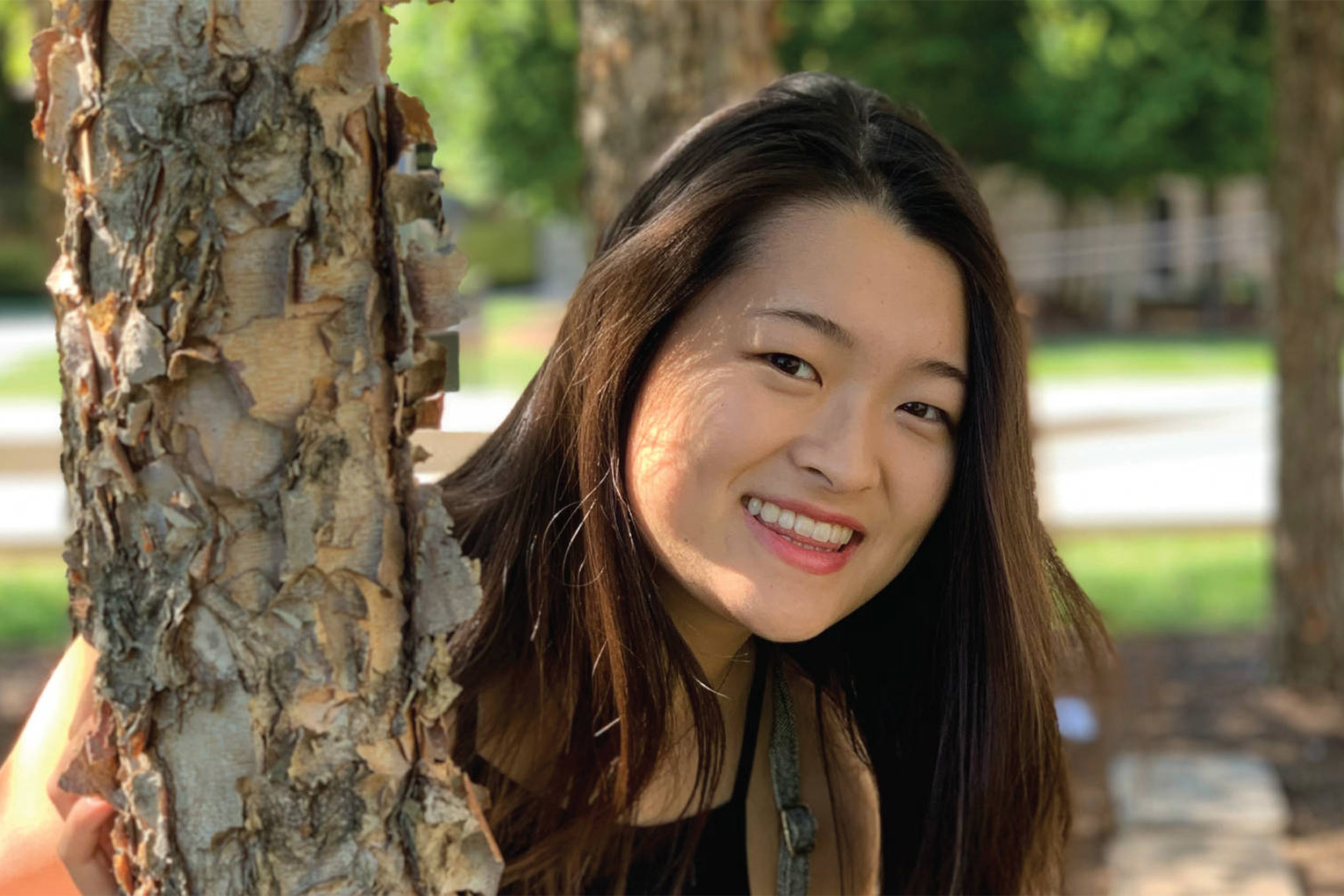‘Thumbelina’ carries big message to the stage
Playwright, composer Julia Riew ’21 wants kids to know ‘it’s OK to be different’
Julia Riew ’21 wrote the book and composed the music for “Thumbelina: A Little Musical,” which will be performed at the Loeb Drama Center Dec. 20-31. The Lowell House resident, who is studying Theater, Dance & Media and music, sat down with the American Repertory Theater (A.R.T.) to talk about her work on this season’s family holiday show.
Q&A
Julia Riew ’21
A.R.T.: When did you know you wanted to be a writer-composer? How did it all start?
RIEW: Theater and music were always a part of my life. I started my classical training in violin at the age of 4, then began singing when I was 6. I would always make up plays that I would perform with my cousins at family reunions and with my friends as we forced our teachers to watch during recess! In middle school, it all naturally came together when I started writing my own music and stories. Then I was part of the Arch City [Kids] Theater Troupe, which was run by kids from ages 8 to 18. We held cabarets to raise money for juvenile diabetes. I also did a lot of school musicals, until one day I thought, “What if I wrote my own?”
A.R.T.: What drew you to the story of “Thumbelina” for this production?
RIEW: Most people are familiar with the fairy tale — they’ll say, “Oh! Isn’t she the little girl who’s the size of a thumb?” — but no one really knows the story very well. This meant I had the opportunity to rewrite her story so she’s no longer just a little victim of her circumstances. Instead of her story being determined by a prince who comes to the rescue, my Thumbelina is a voracious reader. Despite being sheltered in her mother’s garden, she spends her time gaining expertise through books, and reading adventure novels that fill her with curiosity and desire for her own journey.

A.R.T.: How are you bringing the fantasy world of Thumbelina to life onstage?
RIEW: We thought it would be really fun to play with the idea of size, so our set and costume designers have created pieces that are scaled way up, such as giant flowers and trees. Our characters look like small fairies, animals, and insects in comparison. There’s a song called “Anywhere” that goes, “Take a look inside a story book, and your mind becomes a stage.” I wrote it to invite kids to channel their imagination and collaborate with us to tell this story.
A.R.T.: The A.R.T. commissioned “Thumbelina” after your show “The East Side” received a student production at Harvard’s Farkas Hall in April 2019. That show was centered around Asian American identity and was born out of an urgency to tell stories authentically. Can you speak more to your role as an emerging Asian American artist?
RIEW: Growing up in Missouri, I didn’t see many people who looked like me, especially onstage. The first time I ever saw a Korean on a stage I was 19, and I’m 20 now. That was “Endlings” by Celine Song at the A.R.T., and I was in such awe because I was finally watching a Korean story. “Hamilton” had come out recently, and it made me realize that stories like mine weren’t being told enough, either. That’s why I wrote “The East Side,” which is about my Asian American experience.
My collaborators and I decided to form the Asian Student Arts Project, a pan-Asian arts group at Harvard. We wanted to reach the Asian artists on campus. We asked, “Where were they? How could we support them more?” Now we host open-mic nights, workshops, guest speakers, and we plan to put on a show every semester. It’s a great community and platform for people to share their work, and we’re even collaborating with other minority theater groups on campus to bridge our worlds.
A.R.T.: What were your thoughts as you were headed into the casting for “Thumbelina”?
RIEW: For me, diverse casting is definitely very important. As a person of color who has auditioned for a lot of shows before, I know the importance of highlighting different voices. I definitely had the audience in mind, thinking, “Who are these kids going to see when they look up on stage? Are they going to see someone they can relate to?” That was really important to me, so I made it a point not to picture what I thought the cast would look like beforehand. When Janiah Lockett walked in the room and engaged with the other actors, I instantly knew she was going to be Thumbelina.
A.R.T.: What are you hoping audiences take away from Thumbelina’s journey?
RIEW: First of all, I hope the show is fun for parents, kids, anyone. I want them all to laugh and have a good time, but also learn that it’s OK to be different — in fact, that’s what makes us who we are. The power of friendship is also a big theme in the show; although we may be different, we have a lot more in common than you think, and we must come together. I also want everyone to chase their dreams just like Thumbelina did after years of dreaming.
Lama El Homaïssi is the A.R.T. dramaturgy and publications assistant.






